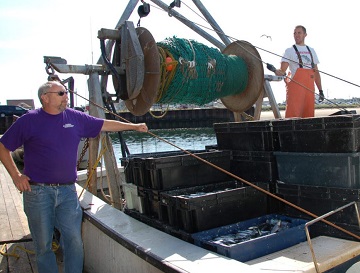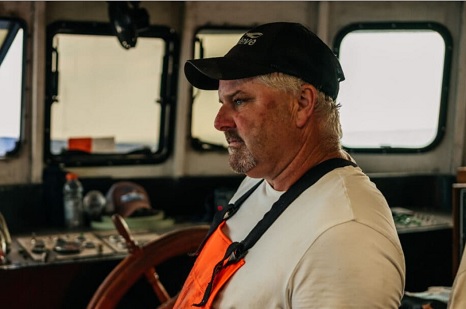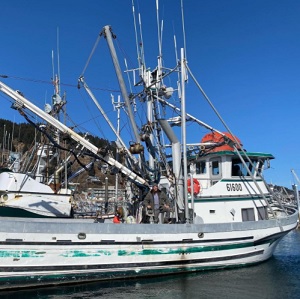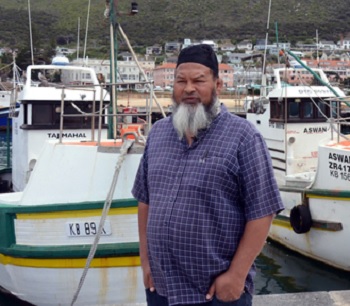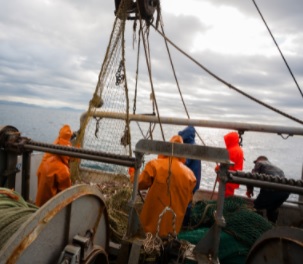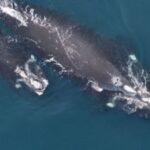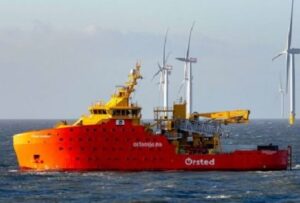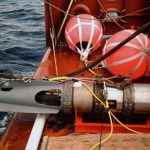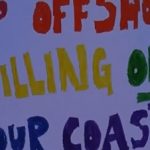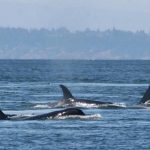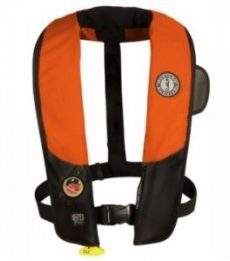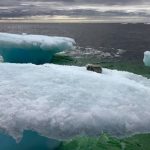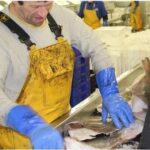Tag Archives: commercial fishing
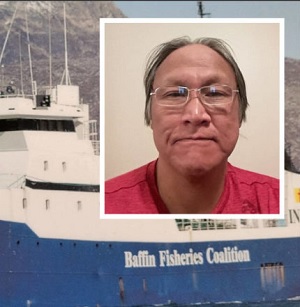
Making a living on the high seas
Fishing has helped sustain Inuit for generations. Commercial fishing has allowed Nunavummiut like Enoo Bell and Kyle Aglukkaq to earn a good living, although it comes with sacrifices. He’s been on hundreds of trips lasting from 15 to 25 days to harvest shrimp and turbot. He didn’t see his family for more than three months on one occasion in the early 1990s. “It’s hard to leave. Sometimes out there (you think), ‘Why am I here?’ On the other hand, his employer takes very good care of him and he’s pleased that Inuit have increasingly become rights-holders within the commercial fishing industry. His commercial fishing career has taken him to places like Greenland, Iceland, the Faroe Islands, Denmark, Norway and England. >click to read< 18:55
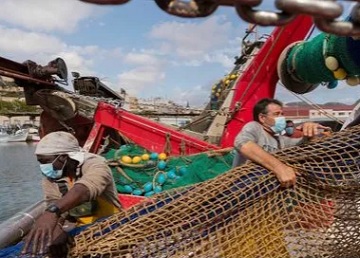
What is the payment for a life of sacrifice? Working at sea is not as profitable as before
In the instability of the ship, he sinks into longing. In the one that evokes family, friends… Maybe he won’t get back in time to see the birth of his son, or the wedding of his sister, who before leaving to the tide already had promised. The work to be done on board brings his thoughts back to the reality of the ship at a stroke. But only temporarily. Insomnia in his break time, caused by the need to be alert at all times, will bring those ideas back to his head, just thinking about being able to catch a good catch to bring his family as much money as possible, and that his sacrifice has meaning. >click to read< 09:20
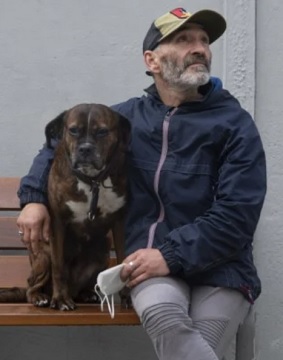
A Spanish fisherman’s life on the high seas: harsh, risky and badly paid
The tragedy, Spain’s worst fishing accident in nearly 40 years which claimed 21 lives and left only three survivors when their ship foundered in stormy waters off Newfoundland, has thrown into sharp relief the risks and harsh working conditions faced by fishermen. Often these deep-sea fishermen will spend months at sea, far from their families. “You’re away for so long: you go out to sea when your child’s just been born and when you come back, he’s already doing his first communion,” jokes Martínez as he takes a coffee at a bar popular with fishermen in Marín. He used to spend six-month stints at sea fishing for cod off Newfoundland but is currently not working after having a hernia operation. commercial fishing. >click to read< 14:04
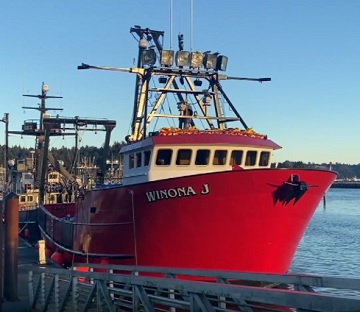
F/V Winona J: Catching up with ‘Deadliest Catch Dungeon Cove’ crew
Captain Mike Retherford Jr. says he’s never been afraid for his life fishing off the Oregon Coast, but he’s witnessed some close calls in his lifetime of commercial fishing. Retherford, his family and crew were featured in the 2016 “Deadliest Catch” spin-off, “Dungeon Cove.” The F/V Winona J is just one of the vessels responsible for the Dungeness crab season’s record-breaking revenue. Video, photos, >click to read< 16:55
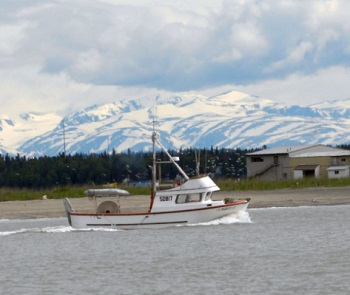
Alaska Department of Fish and Game forecasts fair to poor sockeye runs for Cook Inlet, Copper River
State biologists are projecting a mixed bag of returns this spring and summer for Southcentral’s popular sockeye salmon fisheries. Alaska Department of Fish and Game officials on Feb. 7 issued a forecast estimating that just less than 5 million sockeye will return to upper Cook Inlet river systems, allowing for a harvest of nearly 3 million sockeye from the region overall. It’s expected approximately 2.9 million fish from the total run will be headed to the Kenai, with another 941,000 pegged for the nearby Kasilof. >click to read< 19:19
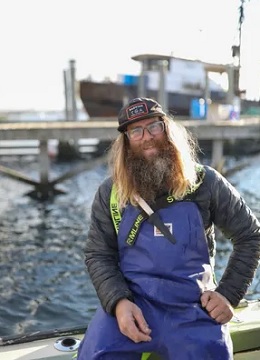
Newport Rhode Island’s commercial fishing industry faces challenging times
“Different? How are things different? Just look at it.” Gazing out over the water toward downtown Newport from a dock on Long Wharf, Denny Ingram, the burly captain of Blue Moon, is answering my question with a question. “Nothing’s the way it used to be. Nothing.” We’re standing on the last remaining pier dedicated to the city’s commercial fishing industry. The view is crowded with pleasure boats, mid-rise condos and high-end hotels. When Ingram started fishing nearly 40 years ago, the scene was quite different. Today, all of the businesses serving the commercial fishing industry have evaporated. You can’t even get ice locally. >click to read< 17:21
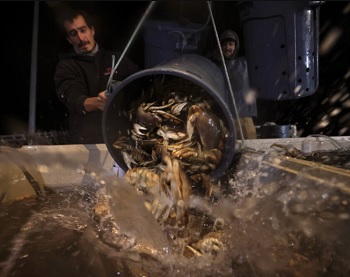
Sonoma Coast Dungeness crab arrives in local markets
Dick Ogg seemed to be relieved to be bringing in a haul of Dungeness crab now that the season has started after a delay of more than a month. “It’s OK,” Ogg said when asked about the haul he had on his boat, Karen Jeanne, which was about 2 miles from shore. “I’m not going to say it’s great. But it’s OK.” Ogg noted that the season provides an economic shot-in-the-arm for those tied to fisheries, especially the estimated 30 crabbers docked in Bodega Bay, the processors who transport the crustaceans, and the markets and restaurants that sell the product. photos, >click to read< 08:43
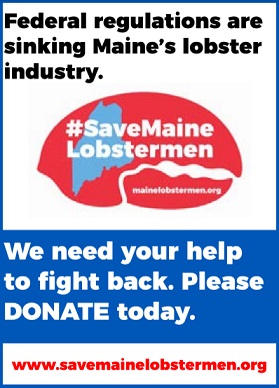
Lobster fishing being threatened
Commercial fishing, in particular, lobster fishing is an integral part of our local community and the economy of our state. This way of life is being threatened by new burdensome federal regulations. Over time, this will drive many fishermen out of business and forever change the character of the Maine lobster industry and our community. These regulations are championed as a way to help protect the North Atlantic right whale but will fail to do so. We have to fight back against this regulatory onslaught. >click to read< by Troy Plummer and Mark Jones, and please click and donate to www.savemainelobstermen.org, if you can!
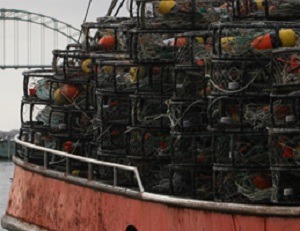
Commercial Fishing Safety on the West Coast
In 2009, NIOSH completed an in-depth study of commercial fishing fatalities in the United States for the decade spanning 2000-2009. The purpose of the study was to identify the most hazardous fisheries around the country and to describe the unique safety issues in each. For this study the US was divided into four fishing regions: Alaska, West Coast, East Coast, and the Gulf of Mexico. The results of this analysis for the West Coast region can be found in the document,,, >click to read< 13:18
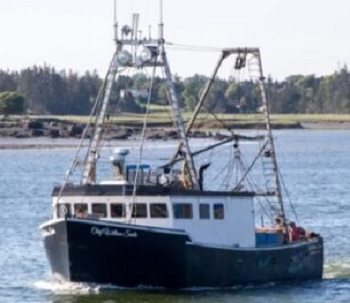
Hearts broken and fears realized when the Saulis crew didn’t come home – A Year Later
Dec. 15 marks the one-year anniversary of the sinking of F/V Chief William Saulis scallop vessel, a tragedy that took the lives of six men and forever changed the lives of so many more. We still think about the crew. We still think about their families. We still think about the fishing communities that are deeply touched and heartbroken when those who make their living on the water do not come back home. Those aboard were Capt. Charles Roberts, Aaron Cogswell, Daniel Forbes, Michael Drake, Geno Francis and Leonard Gabriel. It was reported there had been no distress call made. photos, >click to read< 17:59 By Tina Comeau
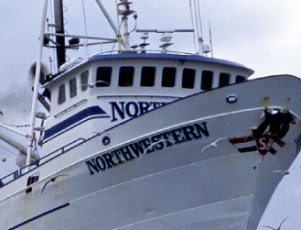
‘Deadliest Catch’: Here’s How Captain Sig Decides Where To Set Crab Traps
Commercial fishing is sometimes like a game of cat and mouse. The fish obviously move, so you can’t always count on one spot when it comes to setting crab pots out in the Bering Sea. Sig Hansen said there are ways to look for patterns in the fishing migrations. By tracking these things throughout the season, it’s easier for the fishermen to determine where to drop their crabbing pots. The Northwestern captain explains this to >Fishing.net, click to read< in a recent interview about where and how to track the good fishing. >click to read< 19:37
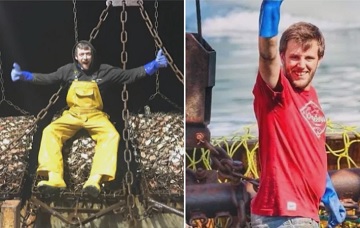
Sussex RNLI remember F/V Joanna C tragedy on first anniversary
38-year-old Robert Morley and 26-year-old Adam Harper drowned when their boat sank on the 21st of November 2020. The captain of the boat, Dave Bickerstaff, was pulled from the water after he was found clinging to a lifebuoy. The 45ft scalloping boat put out an emergency distress beacon at around 6am, with two RNLI lifeboats and a helicopter joining the search, which at one point involved 17 vessels and was one of the largest ever undertaken on the Newhaven coast. photos, >click to read<08:11
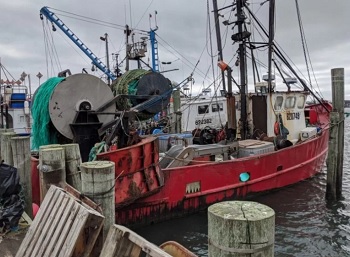
Amid Hamptons Mansions, East End Fishermen Beat On Against The Tide
On Gosman’s dock in Montauk, seagulls hovering above, I was greeted by the smells of gasoline and fish as I walked on the worn, white-speckled planks. The water looked invitingly blue, and a group of fishermen were readying their vessel for a day’s work. One of the fishermen and I exchanged nods. A cigarette hung from his lips and he wore heavy work gloves, thick orange waders with suspenders and a greasy baseball cap. The romanticized life of Montauk fisherman seeped into my head,,, >click to read< 10:48
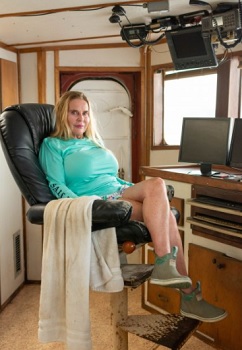
Shrimpin’ Ain’t Easy
Miss Marilyn Louise, a third-generation commercial fisherwoman, is one of the largest contributors to the seafood supply chain coming through Mayport Inlet. The lifelong resident of Mayport Fishing Village walked me through what it’s like to live a life sustained by the ocean. As a child, Miss Marilyn learned to run shrimp boats from her father and grandfather. She’s since passed her knowledge and experience on to her own children, having taken her son out shrimping with her when he was only 11 days old, noting he had sea legs before he could walk on land. >click to read< 07:56
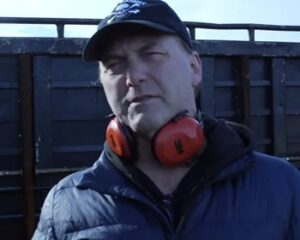
What Happened To Andy Hillstrand From Deadliest Catch?
Discovery Channel crab fishing reality TV series “Deadliest Catch” chronicles real-life expeditions by various boating crews in the Bering Sea, based out of a port located in Dutch Harbor, Alaska. Longtime series regular Andy Hillstrand, however, left “Deadliest Catch” completely, leaving some fans wondering what happened to the former series mainstay. Initially, Andy’s departure coincided with the retirement of his brother Johnathan Hillstrand, with whom he essentially shared captain’s duties on their boat, the FV Time Bandit. >click to read< 18:11
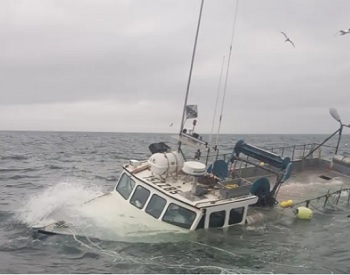
Fishing boat Captain is grateful for the quick response of his fellow fishermen
Élie Dugas, captain of the fishing boat that sank off Miscou on Monday morning, said he’s grateful for the help from fellow fishermen. Within minutes of his distress call at about 6:30 a.m., about eight boats were in sight, ready to help rescue the crew,,, He said he bought the Maximilien two years ago. “It’s a hard blow,” said Dugas, who is based in Miscou and has been fishing for 46 years. Rescuers first tried to pump out the water and then tow the herring boat, but it was soon determined to be too dangerous. “We couldn’t save the boat,” said Fisherman Steven Hughes,, The four crew members of the Maximilien were taken safely to shore. >click to read< 12:16
Safety Bulletin 17: Safety concern over lifting operations on fishing vessels
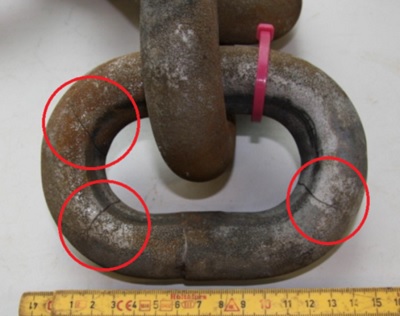 The Maritime and Coastguard Agency are issuing this safety bulletin to remind owners, employers, skippers and crew of UK fishing vessels of their responsibilities regarding health and safety following a number near misses, accidents, and a fatality – during lifting operations. Although applicable to all fishing vessels it is scallop dredgers that are of immediate concern. >click to read< -22:27
The Maritime and Coastguard Agency are issuing this safety bulletin to remind owners, employers, skippers and crew of UK fishing vessels of their responsibilities regarding health and safety following a number near misses, accidents, and a fatality – during lifting operations. Although applicable to all fishing vessels it is scallop dredgers that are of immediate concern. >click to read< -22:27

The last in a long line of Milwaukee commercial fishermen sets course for Alaska
The men have always started their day wondering whether a load of fish is straining the nets that they set the day before. Today their compass doesn’t point them toward any nets at all. The boat’s rumbling 855 Cummins diesel pushes them down the muddy Kinnickinnic River and under the Hoan Bridge. This is the moment when their eyes normally train on the open waters ahead. But today, the 52-year-old man notices his dad, Alvin, is glancing back. I think this is probably going to be the last time I see Milwaukee from the water, 77-year-old Alvin Anderson says. Yeah, his son, Dan, replies glumly. Then Milwaukee’s last working commercial fishing tug – the Alicia Rae – glides through the north gap of the Milwaukee Harbor breakwater. And it is gone. 20 photo’s, >click to read< 08:10
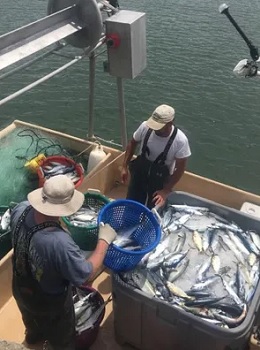
“We’re in pretty bad shape,” Commercial fishermen, fishing industry decline over the past 20 years
North Carolina commercial fishermen have complained for decades that government regulations and a variety of other factors threaten their livelihood and have them headed the way of endangered species. Glenn Skinner of Newport, executive director of the North Carolina Fisheries Association an advocacy group of commercial fishermen, said statistics back that up. “These declines are the result of many different factors. with regulations, the fear of future regulations or outright bans on commercial fishing gears being a significant factor,” Skinner said. He said public perception and political agendas drive the regulations. >click to read< 11:26
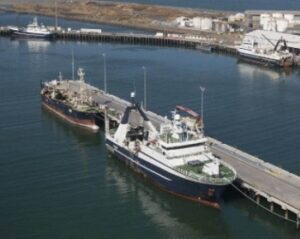
New Zealand: Reparation sought for family of man who died on Sanford factory trawler
New Plymouth man Steffan Antony Stewart, 26, was discovered fatally injured on the factory deck of the San Granit on November 14, 2018, after becoming trapped in a piece of machinery aboard the New Zealand-registered deep-sea factory trawler. The deckhand immediately raised the alarm, but after Stewart was removed from the accumulator the ship’s medic found no signs of life. The 67-metre vessel, which had been trawling 102 kilometres east of Banks Peninsula, immediately returned to Timaru’s port, arriving about 4pm that day. Representatives of Maritime New Zealand and Sanford appeared before Judge Tony Couch in the Timaru District Court on Thursday. >click to read< 09:25
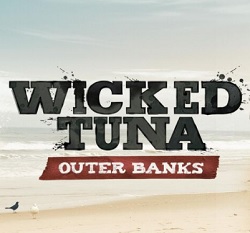
Occupational Change! From Wall St. to the T.V. Tuna Fleet!
Tuna fisherman Captain Bobby Earl was fishing off the coast of North Carolina last summer when his boat exploded, a saga that the Baysider chronicles in this season of Wicked Tuna: Outer Banks, a fishing reality show. While Earl counts escaping the blazing boat as among “the most surreal experience[s] of my life,” the Wall Street manager turned commercial fisherman has had a rather unusual life trajectory. Earl was born and raised in Bayside, Queens, before rising through the ranks on Wall Street. When the housing market crashed in 2008, Earl got fired from his job as a regional manager for Bank of America investments. 2008 changed my life too. >click to read< 11:44
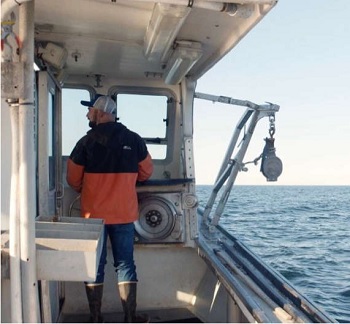
A Day in the Life of Maine Lobsterman, Mike Sargent, in his own words.
“A lot of people think it’s like Deadliest Catch,” Mike Sargent says with a laugh. But his days are very different from the high-stakes drama of a reality show. Learn about what it takes to bring lobster from the bottom of the Atlantic Ocean to your plate with a day in the life of Sargent, in his own words. 3 am: I’ll get up and check the weather forecast. I’ll check the marine buoy data, see if there’s any inclement weather coming or going. If we’re all good to go, I will message my crew, say, “Yep, we’re set to go today.” They’re usually up and at ’em anyway, so I have them on standby. And then, I pack my lunch and head to the wharf. 4 am: I meet my crew down at the wharf,,, >click to read< 16:41
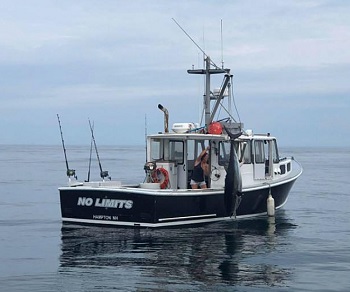
You don’t need five shirtless dudes to catch a big fish. One badass woman can get the job done.
If I want to be as badass as Michelle Bancewicz Cicale from Seabrook, I have some work to do. But hey, you gotta start somewhere! Michelle has been fishing most of her life. Like most things, if you implement the three P’s, practice, patience, and persistence you are bound to get better at it. In 2015 she started fishing mostly for tuna and in 2019 she bought her own boat. The FV No Limits. “No Limits” seems like an appropriate name for Michelle’s boat. ESPECIALLY after she reeled in this monster of a Blue Fin on her first solo venture! photo’s,>click to read< 07:43
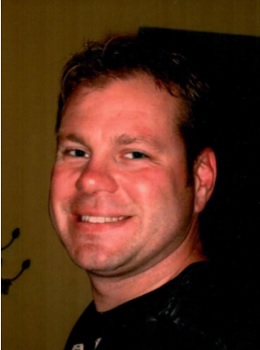
Fisherman Lance Eric Norby bought a boat sight unseen and named it PNEUMA. “can’t” was not in his vocabulary
Lance Eric Norby entered God’s kingdom on July 1st, 2021, doing what he loved most, in hopes that soon he would be living his dream of giving up his mandatory 6-7 day workweek and begin enjoying the adventurous lifestyle Alaska had to offer. He had an eidetic memory and knew every job at the General Motors Assembly plant where he worked. About four years ago, Lance was introduced to the world of commercial fishing by his good friend, David Schwantes. After a couple Summers of working with and for David on his boats, last year he bought a 32′ aluminum commercial fishing boat, sight unseen, during Covid, naming it PNEUMA. >click to read< 07:55
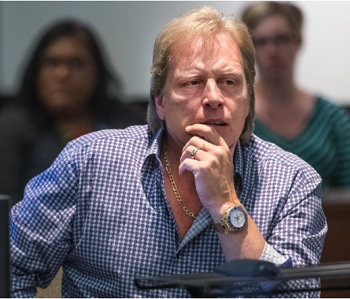
The Deadliest Catch has been a huge success story for Captain Sig Hansen
American captain Sig Hansen is the leading figure behind the fishing vessel named F/V Northwestern. Sig Hansen’s net worth is estimated to be $4 million. Sig came under huge prominence after starring in each season of the popular documentary television series Deadliest Catch. Later Hansen served as technical advisor for the production team. Sig Hansen has been a constant in the show while entertaining fans with their daily life adventures on the sea. While he later stunned fans by announcing that he is not going to be a part of the television show anymore, he later did return for season 8 of Deadliest Catch.,, >click to read< 09:33






